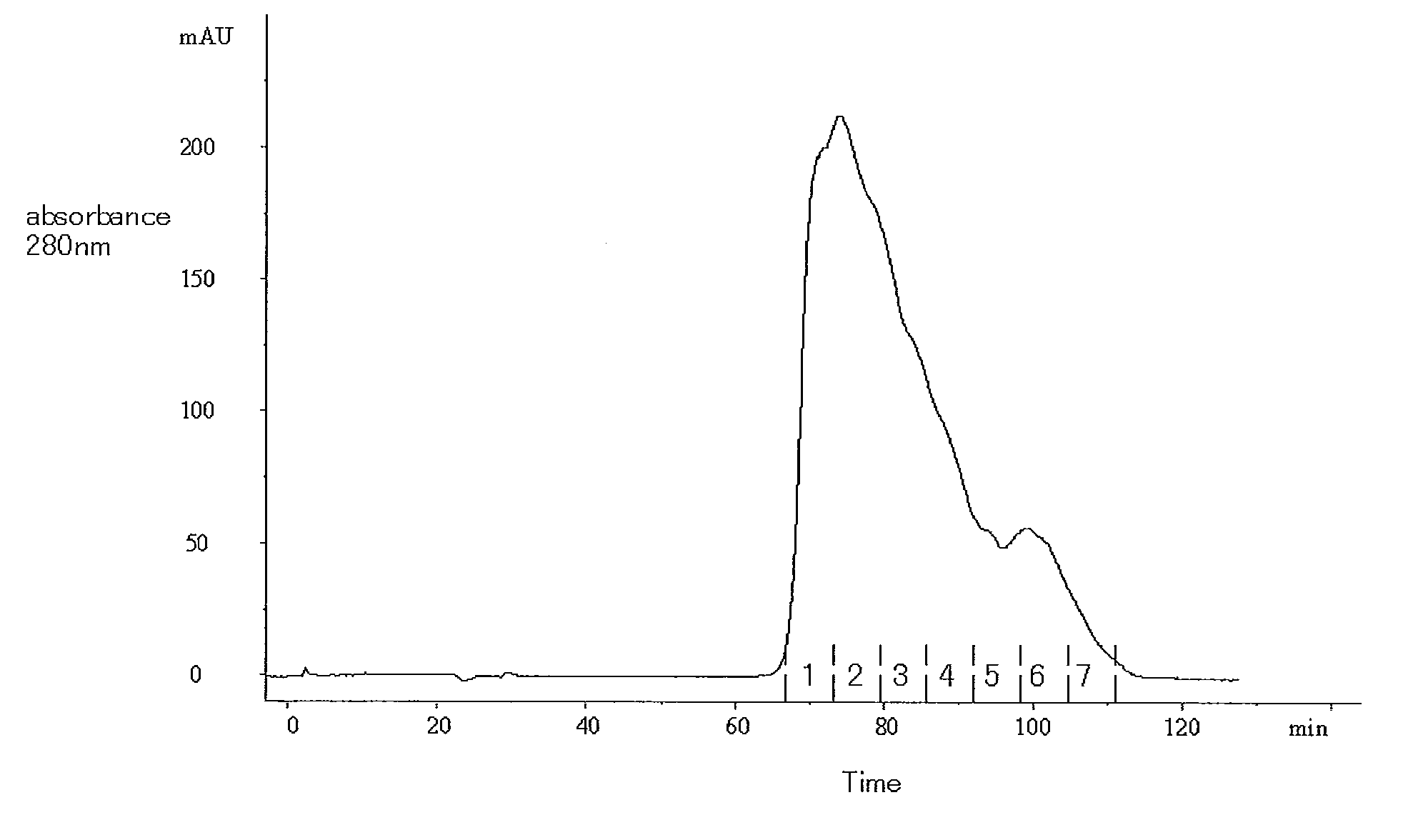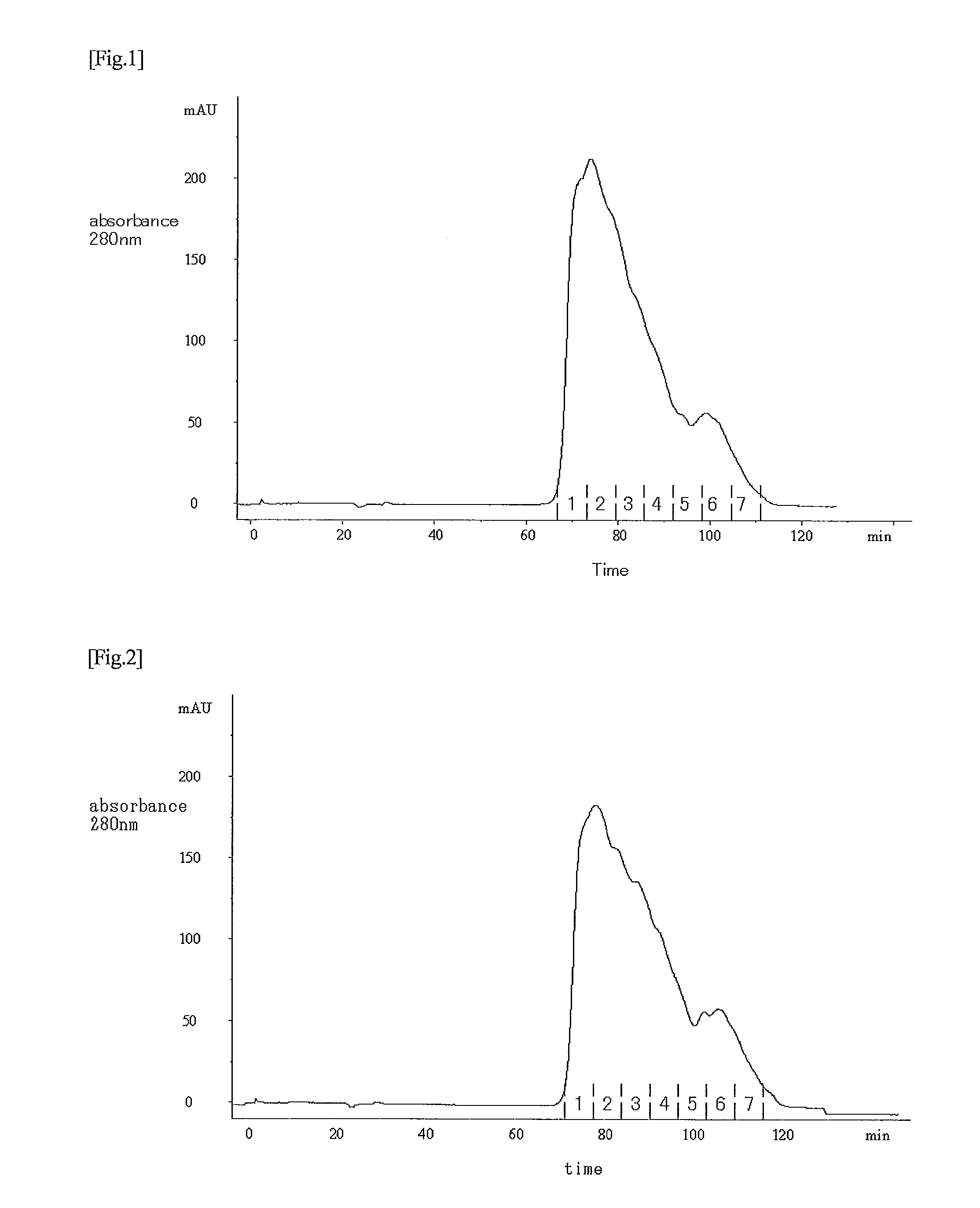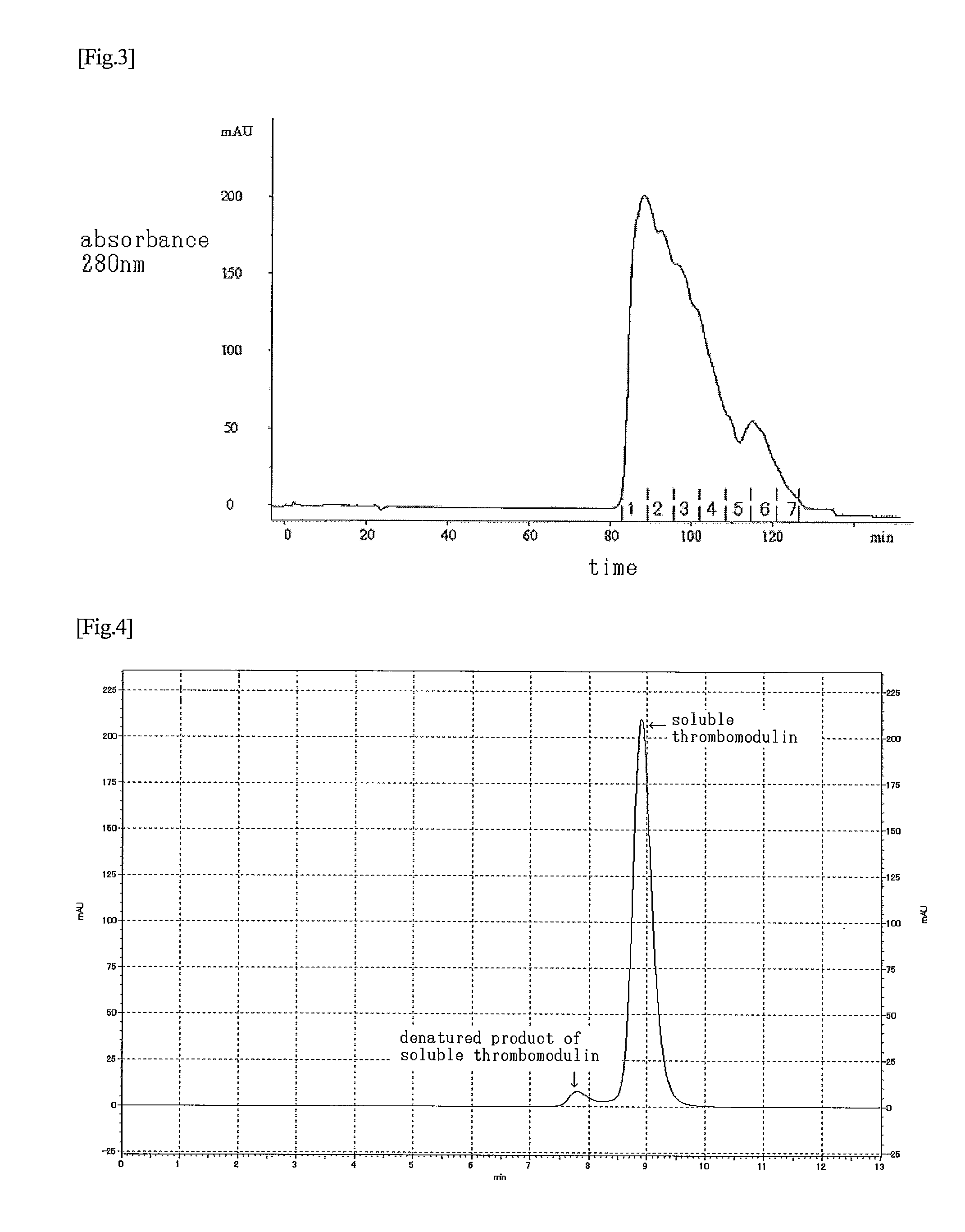Method for producing high-purity soluble thrombomodulin
a thrombomodulin, high-purity technology, applied in the direction of drug compositions, peptide/protein ingredients, extracellular fluid disorder, etc., can solve the problems of decreased separation capacity, increased linear velocity is not appropriate, and decreased separation capacity, so as to achieve high productivity
- Summary
- Abstract
- Description
- Claims
- Application Information
AI Technical Summary
Benefits of technology
Problems solved by technology
Method used
Image
Examples
example 1
Rough Purification with Strong Anion-Exchange Column
[0101]In accordance with the descriptions of JP Patent Publication (Kokai) No. 11-341990 A (1999), DNA encoding the amino acid sequence shown in SEQ ID NO: 9 was prepared, modified, and then incorporated into Chinese hamster ovary cells by genetic engineering technique. The cells were cultured, and a culture supernatant was then obtained. Thereafter, 41 l of the obtained culture supernatant was filtrated with a 0.2-μm membrane filter (Millipore; Millipak 20). The filtrated culture supernatant was subjected to a Q-Sepharose (GE Healthcare Bio-Sciences) column (diameter: 44 cm; height: 26.3 cm) that had been equilibrated with a 20 mM Tris-HCl buffer solution (pH 7.4) containing 150 mM sodium chloride. Subsequently, the column was washed with 6 column volumes of a 20 mM acetate buffer solution containing 180 mM sodium chloride, and was further washed with 8 column volumes of a 20 mM Tris-HCl buffer solution (pH 7.4) containing 180 mM ...
example 2
Purification with Monoclonal Antibody
[0102]In accordance with the descriptions of JP Patent Publication (Kokai) No. 11-341990 A (1999), an anti-thrombomodulin monoclonal antibody was prepared using human lung-derived thrombomodulin as an antigen. The obtained anti-thrombomodulin monoclonal antibody was then allowed to come into contact with and to react with CNBr-activated Sepharose 4 Fast Flow (GE Healthcare Bio-Sciences), so that the anti-thrombomodulin monoclonal antibody was coupled therewith, thereby producing anti-thrombomodulin monoclonal antibody-bound Sepharose 4 Fast Flow 16.5 l out of the elution fraction obtained in Example 1 was subjected to a monoclonal antibody column (diameter: 44 cm; height: 10.5 cm) that had been equilibrated with a 20 mM phosphate buffer solution (pH 7.3) containing 0.3 M sodium chloride. The column was washed by supplying 6 column volumes of a 20 mM phosphate buffer solution (pH 7.3) containing 1.0 M sodium chloride, and then supplying 3 column v...
example 3
Purification with Strong Cation-Exchange Column
[0103]A 1.0 M glycine-HCl buffer solution (pH 2.0) was added to 193 ml out of the purified solution obtained in Example 2, so as to adjust the pH of the solution to pH 3.5. This solution was subjected to a SP-Sepharose FF (GE Healthcare Bio-Sciences) column (diameter: 16 mm; height: 12 cm) that had been equilibrated with a 0.1 M glycine buffer solution (pH 3.5) containing 0.3 M NaCl. The column started to be washed with a 100 mM glycine-HCl buffer solution (pH 3.5) containing 300 mM NaCl. A pass-through fraction was obtained from the initial rise to decay of the peak of the absorbance at 280 nm, and it was immediately neutralized with a 0.5 M phosphate buffer solution (pH 7.3) so as to adjust the pH of the solution to pH 7, thereby obtaining a highly purified product. It is to be noted that the flow rate was set at 3.3 mL / min. As a result of the measurement by chromatography using the aforementioned Asahipak C4P-50 or the ELISA method d...
PUM
| Property | Measurement | Unit |
|---|---|---|
| pH | aaaaa | aaaaa |
| pH | aaaaa | aaaaa |
| pH | aaaaa | aaaaa |
Abstract
Description
Claims
Application Information
 Login to View More
Login to View More - R&D
- Intellectual Property
- Life Sciences
- Materials
- Tech Scout
- Unparalleled Data Quality
- Higher Quality Content
- 60% Fewer Hallucinations
Browse by: Latest US Patents, China's latest patents, Technical Efficacy Thesaurus, Application Domain, Technology Topic, Popular Technical Reports.
© 2025 PatSnap. All rights reserved.Legal|Privacy policy|Modern Slavery Act Transparency Statement|Sitemap|About US| Contact US: help@patsnap.com



